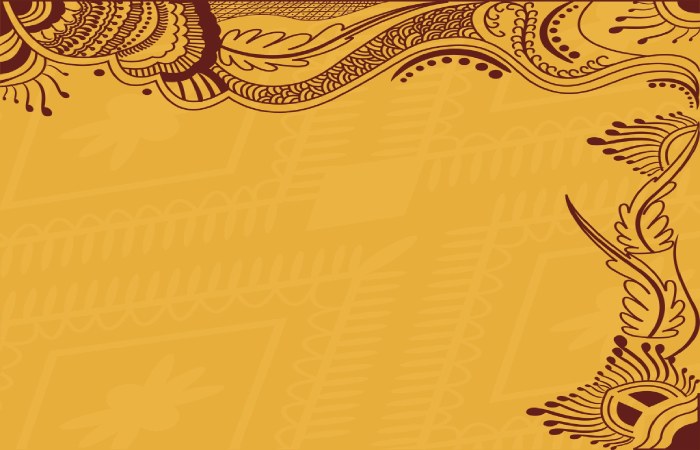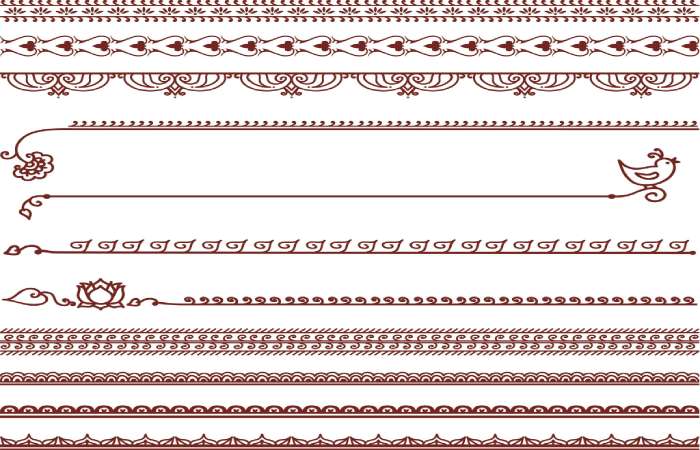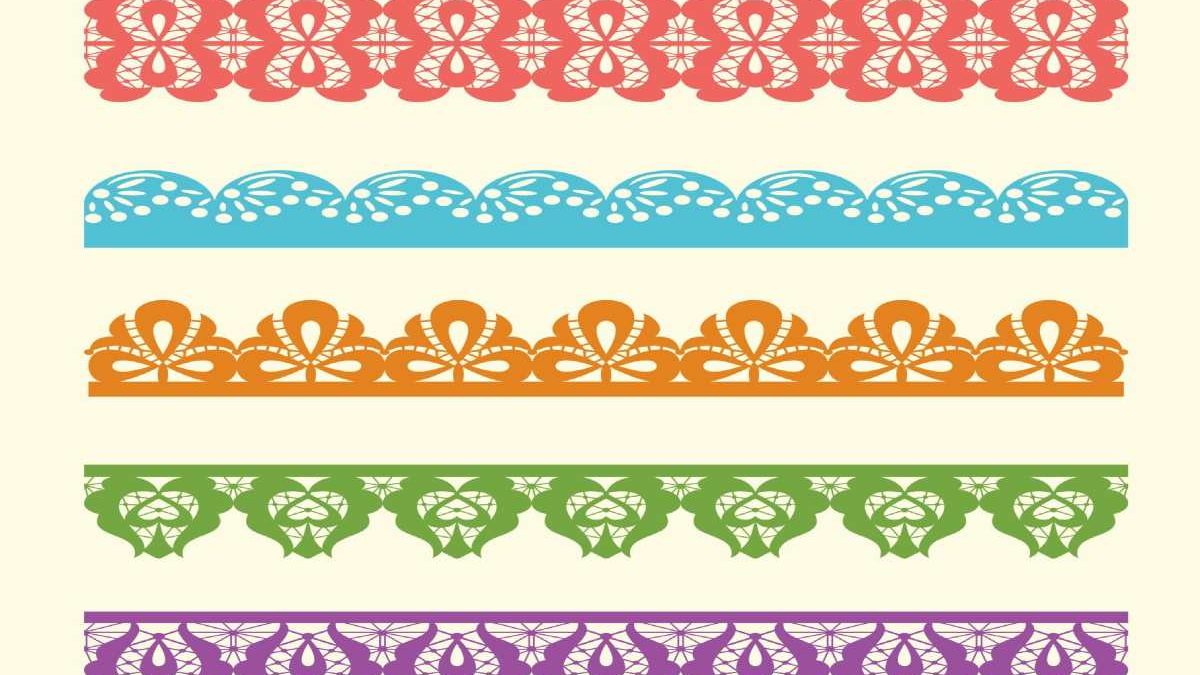Table of Contents
Introduction
Muggulu design borders is an old-style folk art form from South India. It is made by colored powders, rice or flower petals. These designs are typically made in front of homes or temples to welcome guests and bring good luck.

Different Types Of Muggulu Designs Borders
Muggulu design borders is an old-style folk art form from South India. It is made by colored powders, rice or flower petals. Borders are an essential element of Muggulu designs as they define the shape and form of the overall design. Here are some different types of Muggulu border designs:
Straight Line Border
Straight lines are drawn in this type of border to create a rectangular or square shape around the central design. These lines can be simple or decorate with dots, curves, or small motifs.
Dotted Border
Dots are placed in an exact pattern to create a border around the central design. The drops can be connect using lines or curves to form a decorative edge.
Curved Border
Curved lines or semi-circles are drawn to create a border around the central design. These curved lines can be simple or intricate, adding a graceful and flowing look to the Muggulu design.
Floral Border
Flower motifs are use to create a border around the central design. These flowers can be drawn freehand or with the help of dots and arrange in various patterns and shapes to create a beautiful floral border.
Peacock Border:
Peacock motifs commonly used in Muggulu designs can also create a border. And also these majestic birds can draw in different poses and sizes, adding a regal and artistic touch to the overall design.
Freehand Border
These borders are often asymmetrical and can be customize to suit the creativity and imagination of the artist.
What Makes Muggulu Designs Borders Look Different.

The borders of Muggulu designs play a significant role in their overall aesthetics and can significantly impact their appearance. Here are some factors that can make Muggulu design borders look different:
- Pattern complexity
Muggulu design borders can vary in complexity, ranging from simple geometric patterns to highly intricate motifs. The complexity of the border design can significantly affect its overall appearance.
- Size and thickness
The size and thickness of the border can also impact its appearance. Edges can be thin or thick, and the border’s size can vary, ranging from narrow to wide. Thin edges create a delicate and refine look, while thick frames make a bold and prominent statement.
- Symmetry and symmetry
Some Muggulu design borders are symmetric, while others are asymmetric. Symmetric boundaries are design with balance patterns on both sides of the central line, creating a harmonious and balanced look. On the other hand, asymmetric borders have ways that are not identical on both sides of the main line, making a more dynamic and unconventional appearance.
- Color contrast
The choice of colors used in the border can significantly impact its appearance. Muggulu designs often use vibrant colors to create a visually appealing look. The color contrast between the edge and the central design can create an interesting visual interplay, making the wall stand out and giving a unique look to the overall design.
- Texture and detailing
The texture and detailing of the border can also make a difference in its appearance. Frames can be create with smooth lines, sharp edges, or textured patterns, adding depth and dimension to the design. Detail borders with intricate motifs or textures can create a rich and complex look, while smooth and simple edges give a clean and minimalistic appearance.
Conclusion
The above factors, such as pattern complexity, size and thickness, symmetry, color contrast, texture and detailing, and cultural influences, can make Muggulu design borders look different. However, these factors can be creatively combine to create unique and visually appealing Muggulu designs with distinct border designs.


